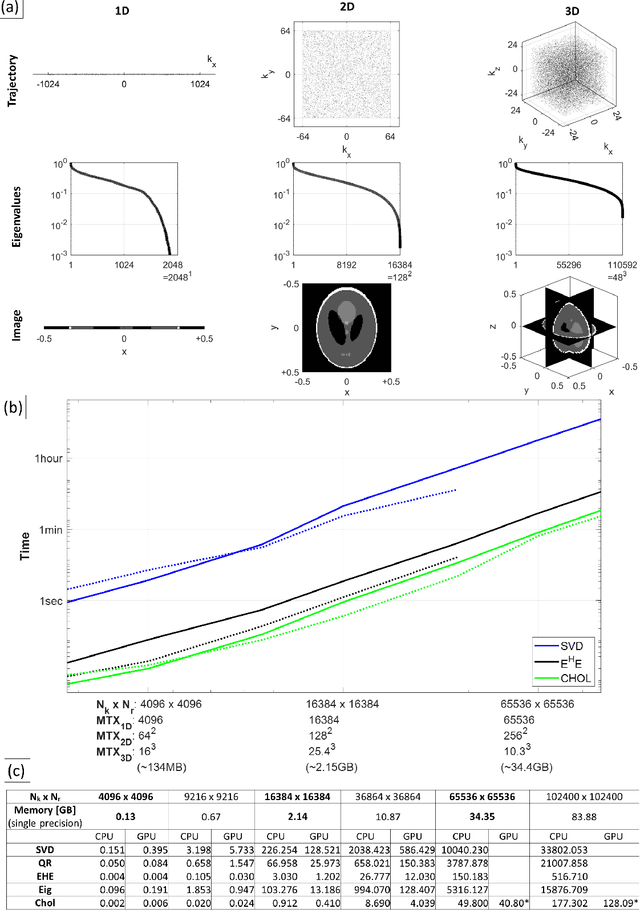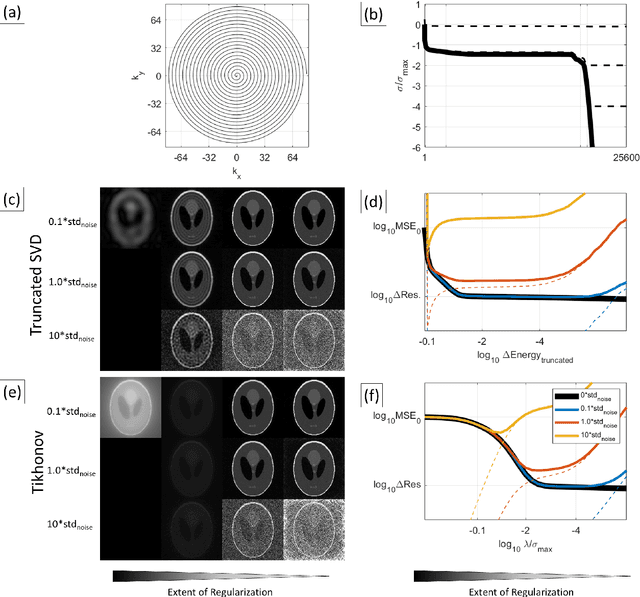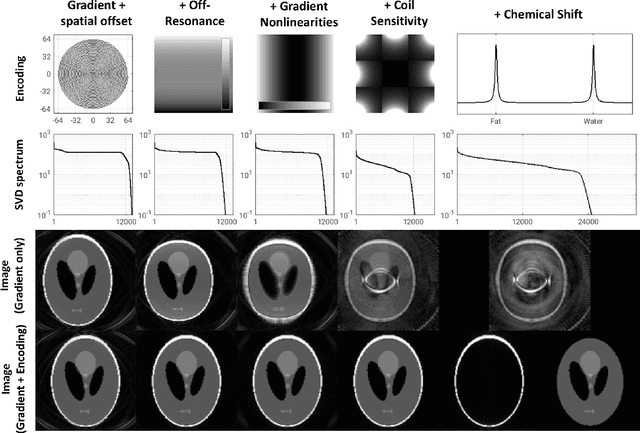Peter Morris
Pinv-Recon: Generalized MR Image Reconstruction via Pseudoinversion of the Encoding Matrix
Oct 08, 2024



Abstract:Purpose: To present a novel generalized MR image reconstruction based on pseudoinversion of the encoding matrix (Pinv-Recon) as a simple yet powerful method, and demonstrate its computational feasibility for diverse MR imaging applications. Methods: MR image encoding constitutes a linear mapping of the unknown image to the measured k-space data mediated via an encoding matrix ($ data = Encode \times image$). Pinv-Recon addresses MR image reconstruction as a linear inverse problem ($image = Encode^{-1} \times data$), explicitly calculating the Moore-Penrose pseudoinverse of the encoding matrix using truncated singular value decomposition (tSVD). Using a discretized, algebraic notation, we demonstrate constructing a generalized encoding matrix by stacking relevant encoding mechanisms (e.g., gradient encoding, coil sensitivity encoding, chemical shift inversion) and encoding distortions (e.g., off-center positioning, B$_0$ inhomogeneity, spatiotemporal gradient imperfections, transient relaxation effects). Iterative reconstructions using the explicit generalized encoding matrix, and the computation of the spatial-response-function (SRF) and noise amplification, were demonstrated. Results: We evaluated the computation times and memory requirements (time ~ (size of the encoding matrix)$^{1.4}$). Using the Shepp-Logan phantom, we demonstrated the versatility of the method for various intertwined MR image encoding and distortion mechanisms, achieving better MSE, PSNR and SSIM metrics than conventional methods. A diversity of datasets, including the ISMRM CG-SENSE challenge, were used to validate Pinv-Recon. Conclusion: Although pseudo-inversion of large encoding matrices was once deemed computationally intractable, recent advances make Pinv-Recon feasible. It has great promise for both research and clinical applications, and for educational use.
Using Ballistocardiography for Sleep Stage Classification
Feb 15, 2022Abstract:A practical way of detecting sleep stages has become more necessary as we begin to learn about the vast effects that sleep has on people's lives. The current methods of sleep stage detection are expensive, invasive to a person's sleep, and not practical in a modern home setting. While the method of detecting sleep stages via the monitoring of brain activity, muscle activity, and eye movement, through electroencephalogram in a lab setting, provide the gold standard for detection, this paper aims to investigate a new method that will allow a person to gain similar insight and results with no obtrusion to their normal sleeping habits. Ballistocardiography (BCG) is a non-invasive sensing technology that collects information by measuring the ballistic forces generated by the heart. Using features extracted from BCG such as time of usage, heart rate, respiration rate, relative stroke volume, and heart rate variability, we propose to implement a sleep stage detection algorithm and compare it against sleep stages extracted from a Fitbit Sense Smart Watch. The accessibility, ease of use, and relatively-low cost of the BCG offers many applications and advantages for using this device. By standardizing this device, people will be able to benefit from the BCG in analyzing their own sleep patterns and draw conclusions on their sleep efficiency. This work demonstrates the feasibility of using BCG for an accurate and non-invasive sleep monitoring method that can be set up in the comfort of a one's personal sleep environment.
 Add to Chrome
Add to Chrome Add to Firefox
Add to Firefox Add to Edge
Add to Edge